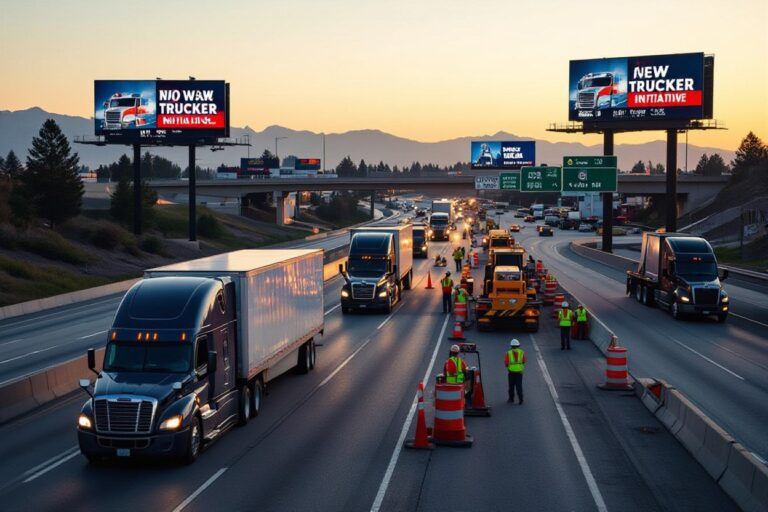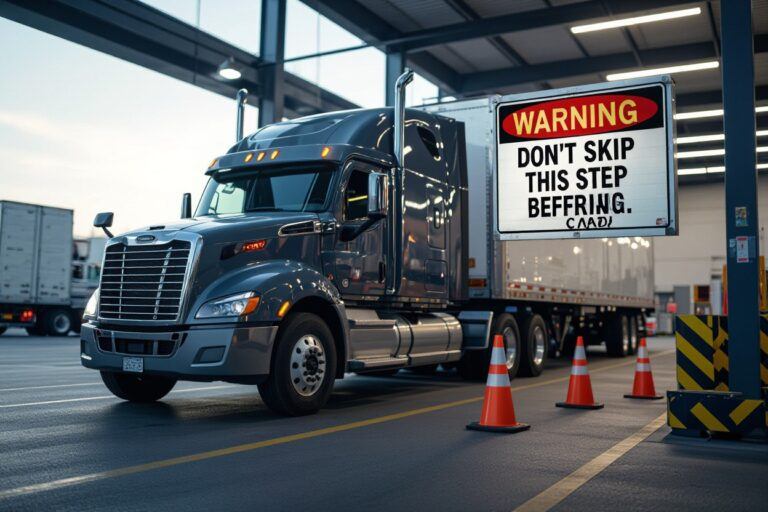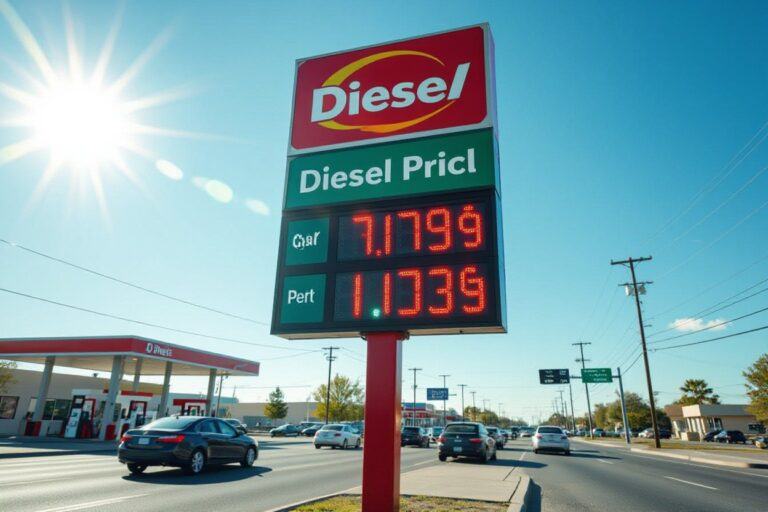Most fleet decisions ignore mile-by-mile tracking, but I rely on it because when you log each mile you expose safety risks like fatigue and reckless routes, deter fuel theft and unauthorized use, and unlock cost savings and routing efficiency. I use data to enforce compliance, reduce downtime, and give you clear evidence for claims and billing, so your operations run cleaner, safer, and more profitable.
Key Takeaways:
- Precise mileage tracking ensures accurate pay, fuel reimbursement, and tax deductions, reducing lost revenue and billing disputes.
- Maintains compliance with regulations and provides verifiable records for audits, insurance claims, and driver hours.
- Enables route optimization and preventive maintenance scheduling to lower operating costs and minimize downtime.
Maximizing Profit: The Dollar Impact of Every Mile
I break down each mile into dollars because marginal gains add up fast: at 6.5 mpg and diesel at $4.20/gal, fuel alone costs about $0.65/mile
I monitor real examples: a 5% improvement in fuel efficiency on a 120,000-mile truck saves roughly $3,900 annually (at 6.5→6.825 mpg, $4.20/gal). I audit routing, tire pressure, and cruise control use, since aggressive acceleration, 10% underinflation, or 5 mph speed increases can raise fuel spend by 5–20%, directly slicing your net per-mile revenue. I quantify wear: scheduled maintenance and component replacements typically cost between $0.12–$0.22 per mile, with tires wearing out around 80,000 miles and brake jobs every 80k–120k miles depending on route. I log miles per component to forecast cash flow, avoid unexpected downtime, and set true per-mile pricing for your contracts. I track specifics: oil/service intervals at about 20k–25k miles for heavy rigs, steer tires often costing $400–$800 each, and full-axle tire sets replacing every 60k–100k miles depending on load and road surface. I use this data to model replacement schedules, predict repair spikes, and show you how reducing harsh braking or overloaded trips can shave hundreds to thousands off annual maintenance spend per truck. I treat mileage as primary audit evidence: the 2017 ELD mandate turned every mile into a digital record, and inconsistent mileage can trigger roadside inspections, FMCSA audits, and insurance disputes. I reconcile GPS, fuel receipts, and trip sheets daily so you have defensible records that protect drivers, reduce dispute time, and keep carriers eligible for contracts. I track Hours of Service rules closely: 11-hour driving limit inside a 14-hour duty window, a required 30-minute break after 8 hours, 60/70-hour weekly limits, and the 34-hour restart. I cross-check miles against your ELD and dispatch data to spot log shaving, incorrect duty status, or trips that inadvertently push drivers over those thresholds. Non-compliance can cost you in multiple ways: immediate driver out-of-service orders at inspections, increased CSA attention, and civil fines that run into the thousands. I watch for discrepancies that prompt carrier audits, lost contracts, and heightened insurer scrutiny so you avoid operational losses and reputational damage. I’ve handled audits where mismatched miles and missing ELD traces escalated into full investigations, resulting in out-of-service actions, contract terminations, and fines totaling thousands of dollars; if an accident occurs, those same records amplify legal exposure and settlement risk, so I keep your ELD/GPS/fuel logs synchronized to limit liability. I analyze telematics and GPS to turn raw miles into actionable safety moves: by flagging repeat speeding, hard braking, and frequent lane deviations I helped a 50-truck fleet cut preventable incidents by about 24%. You get time-stamped evidence to coach drivers, adjust routes, and set automated alerts so high-risk behaviors are corrected before they become crashes. I mine trip data to expose patterns—often 30% of drivers generate 70% of speeding events—so coaching focuses where it matters. Telematics shows repeat offenses (same time, same route), letting you schedule targeted training, shift swaps, or incentive programs that reduce repeat risky behavior rather than applying blanket policies. I fuse GPS traces with weather and traffic feeds to mark persistent trouble spots—icy bridges, chronic congestion, and active construction zones—and push alerts to drivers in real time. That hands you a map of environmental risk that informs routing, speed limits, and shift timing to lower exposure to hazardous segments. For example, I integrated NOAA weather APIs and pavement temp sensors with route histories and found one interchange produced 12 sudden slowdowns and two near-rollovers during winter nights; after rerouting trucks and issuing a reduced-speed alert for that segment, incidents dropped to zero over three months. You can also log recurring hazards—potholes, glare-prone approaches, or nighttime deer crossings—and prioritize infrastructure fixes with carriers or municipalities, turning granular miles of data into tangible safety improvements. I use weekly scorecards tracking on-time delivery, idle minutes, and route adherence; fleets that adopt transparent metrics often see compliance improve by ~25% within six months. You can combine brief coaching, peer reviews, and a modest incentive (for example, a $50 monthly safe-driving award) to reinforce standards. Emphasizing unauthorized detours and excessive idling as high-risk, high-cost behaviors turns raw data into actionable accountability. I deploy ELDs, GPS telematics, and AI-enabled dashcams to cross-verify events; the ELD mandate (since 2017) gives most carriers a compliance baseline. Real-time location accuracy of 3–5 meters, combined with engine diagnostics and accelerometer data, flags harsh braking, unscheduled stops, and idling—capabilities that can deliver up to 15% fuel savings in optimized operations. I integrate telematics with my TMS so geofenced pickups auto-log arrivals and billing, and automated IFTA/HOS reporting slashes paperwork during audits. For remote routes I add satellite-enabled trackers and store-and-forward buffering; routine firmware updates and focused driver training cut sensor false positives. Expect measurable ROI in about 6–12 months through lower fuel use, fewer disputed claims, and clear evidence of risky behaviors to coach away. By converting every logged mile into metrics I identify patterns like deadhead percentage, idle minutes, and route variance. Fleets I consult with typically cut unnecessary miles by 8–12%, yielding $30k–$120k annual savings for a 50-truck fleet depending on fuel costs. I flag outlier trips that spike risk—unexpected long detours or chronic idling correlate strongly with higher maintenance events and driver fatigue. I cluster trips by origin–destination, time-of-day speed profiles, and median miles-per-trip to find repeatable savings. In one regional carrier I reduced average trip length by 10% and cut deadhead from 18% to 10%, lowering fuel burn by about 6%. You can deploy 15-minute GPS heatmaps and pruning rules (max detour +5 miles) to translate those insights into saved miles and tighter ETAs. I combine odometer readings, fault codes, repair histories, and telematics (RPM, coolant temp, vibration) into models that forecast component life. Predictive schedules I implemented reduced unplanned engine failures by 40% and fleet downtime by 25% in a midwest fleet. You receive alerts when a part’s failure probability exceeds a set threshold, letting you swap components on your terms instead of reacting. Digging deeper, I use survival analysis and ensemble models with features like miles since last service, mean RPM over the last 1,000 miles, and peak vibration events. For example, crossing 25,000 miles since an oil service plus vibration spikes >0.6g pushed failure probability above 30% in our dataset, prompting preemptive inspection that averted axle damage. Automated alerts tied to those signals cut major repairs and kept trucks moving. Conclusively, I track every mile because it protects my income, sharpens route efficiency, documents compliance, and cuts fuel and maintenance costs. When you track your miles, you secure accurate pay and tax deductions, resolve disputes quickly, and spot patterns that boost safety and profitability. Your discipline in logging miles turns data into measurable savings and stronger control over your business. A: Tracking every mile gives precise records for billing, fuel tax (IFTA) filings, and payroll when pay is mileage-based. It exposes inefficient routes, excessive deadhead miles, and unplanned detours so operators can cut fuel and labor waste. Continuous mileage data also strengthens insurance and audit responses by proving where and when a vehicle was operating, and it creates a baseline for measuring driver performance and vehicle wear. A: Mile-level data enables predictive maintenance scheduling based on actual usage instead of arbitrary intervals, reducing breakdowns and expensive emergency repairs. It supports route optimization to reduce fuel burn and time on the road, minimizes idle and empty miles, and improves asset utilization so loads and drivers are matched more efficiently. Over time these small savings compound into significant reductions in fuel, repair, and labor expenses. A: Use integrated telematics/ELD systems that log GPS, odometer, engine hours, and trip metadata, and sync with dispatch and accounting systems. Calibrate odometer/GPS periodically, enable geofencing for route verification, and run regular data audits to catch gaps. Combine automated logs with clear driver procedures for logging exceptions and review reports to translate raw miles into actionable changes—route tweaks, maintenance triggers, driver coaching, and more.Fuel Efficiency and Cost Analysis
Assessing Wear and Tear on Equipment

Regulatory Compliance: Keeping Your Record Straight
Understanding Hours of Service Requirements
The Consequences of Non-Compliance

Boosting Safety: Tracking for Better Decision-Making
Identifying Patterns in Driving Behavior
Assessing Road Conditions and Hazards
Cultivating Accountability: Establishing Best Practices
Creating a Culture of Responsibility Among Drivers
Implementing Technology for Accurate Tracking
Leveraging Insights: Data-Driven Improvements
Using Mileage Data for Route Optimization
Predicting Maintenance Needs with Historical Data
Final Words
FAQ
Q: Why should road truckers track every mile they drive?
Q: How does detailed mile tracking lower operating costs and boost uptime?
Q: What tools and best practices ensure accurate mile tracking and useful insights?





